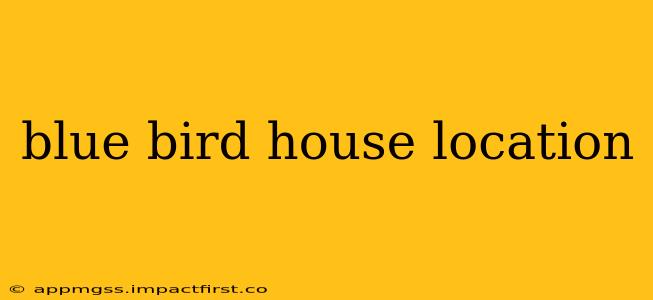Bluebirds, with their vibrant plumage and cheerful songs, are a welcome addition to any backyard. Attracting these beautiful birds starts with providing a suitable nesting location. Choosing the right spot for your bluebird house is crucial for their success and your enjoyment of their presence. Let's explore the key factors to consider when selecting the perfect location.
What is the best height to put up a bluebird house?
The ideal height for a bluebird house is generally between 4 and 6 feet above the ground. This height offers a good compromise between predator protection and accessibility for the birds. Placement higher than 6 feet can make it more difficult for bluebirds to enter and exit, while placing it too low increases vulnerability to predators like cats and snakes. Consider the surrounding vegetation and terrain when deciding on the exact height.
How far apart should bluebird houses be?
Bluebirds are somewhat territorial, so it's important to space your houses appropriately. A minimum distance of 100 to 200 feet apart is recommended. This helps reduce competition and conflict between nesting pairs. However, the specific distance may need adjustment based on the availability of resources and habitat in your area. Observe the birds' behavior after installation—if you notice frequent territorial disputes, consider relocating a house.
What direction should a bluebird house face?
Ideally, your bluebird house should face away from the prevailing winds and direct sunlight. An east or southeast orientation is often preferred, as this provides morning sun for warmth without excessive afternoon heat. However, the best direction can vary depending on your local climate and the specific location of the house. You may need to experiment to determine what works best in your area.
Where should I NOT put a bluebird house?
There are several places to avoid when installing a bluebird house. Avoid placing it:
- Too close to other birdhouses: This can lead to competition and conflict.
- Near dense bushes or tall grass: These provide cover for predators.
- In areas with high human traffic: This can stress the birds and interfere with nesting.
- Directly under overhanging branches: These can provide easy access for predators.
- In areas prone to flooding: This can damage the house and endanger the nestlings.
Should I put a bluebird house near a bird feeder?
While it's not essential to place a bluebird house near a bird feeder, proximity can be beneficial. A readily available food source can attract bluebirds to your yard, increasing the likelihood of them choosing your house. However, ensure the feeder is positioned so that it doesn't provide a convenient hunting spot for predators.
What are the best trees to mount a bluebird house on?
Bluebirds aren't particularly picky about the type of tree or post they use for nesting. The key is to choose a sturdy support that can withstand the weight of the house and the elements. A strong, upright post or a tree with a relatively straight trunk is ideal. Avoid branches that might sway excessively in the wind.
By carefully considering these factors and selecting the optimal location for your bluebird house, you'll greatly increase your chances of attracting these delightful birds and enjoying their presence in your backyard. Remember, patience is key; it may take time for bluebirds to discover and settle into their new home.
